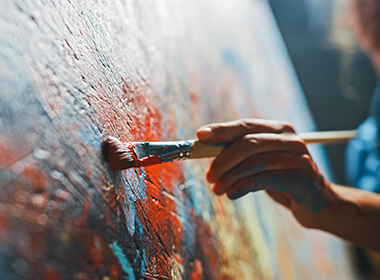
Painting, a form of art that spans the ages
When we talk about art in all its forms, we automatically think of the magnificent paintings exhibited in museums around the world It must be said that some of them are known worldwide such as the Mona Lisa by Leonardo da Vinci, the girl with the pearl earring by Johannes Vermeer or even the Starry Night by Vincent Van Gogh. Besides, did you know that 6 French but out of 10 go to the museum at least once a month?
Painting before Jesus Christ
The origins of this art form go back a long way, dating back to the 18th century. approximately 17,000 years before Christ. Prehistoric men painted cave walls with rudimentary techniques, certainly, but it was definitely painting. At this time, prehistoric men used pigments and tools made by hand. hand to trace marks in the stone. They mainly painted animals. from just three colors: charcoal black, yellow ocher and red ocher. The best-known example concerns the paintings discovered in 1940 in the caves of Lascaux.
Watercolor painting through history
During Prehistory, prehistoric men were not really considered painters, but they were. They were still the precursors. After Prehistory, interest in painting intensified. Each great period of history has had its great painters. During Antiquity, the Greeks painted a lot for decoration. Many houses were painted, but also ceramics. At this same time, in Italy, the first trompe-l’il saw the light of day.
In the Middle Ages, painting was used to illustrate manuscripts in the religious sphere. Frescoes are painted and the illuminations testify to the talent of these artists. If during Prehistory there were only 3 colors, in the Middle Ages there are now 6 (white, green, red, black, yellow and blue). The best-known painters of this historical period are Cimabue and Giotto di Bondone.
The Renaissance period made it possible to democratize this art by moving away from the traditionalist side. religious. More and more portraits were produced and the first works on easels were designed by painters considered to be true artists. entirely part. The perspective finally appears thanks to famous artists such as Leonardo da Vinci, Michelangelo, Sandro Botticelli…
Describe the evolution of watercolor painting through the ages would be almost impossible as this art has remained so limited present in all periods of history. Everyone knows the baroque period, neoclassicism, realism, romanticism, impressionism as well as abstract art. The paint has left an indelible mark on the history of the entire world. It’s an art that has truly crossed paths. the times. Its origins are rich. It’s an art that touches everyone, all social classes, all cultures and all ages.
The different types of paints
Painting is a very vast field composed of: of different styles, techniques and processes. There would be so much to do. say about this art. Most people only know a tiny part of this artistic form, the main ones being:
Painting The oil is composed of drying oil and is used by many artists at home. worldwide. Painting the most famous oil is, without a doubt, the Mona Lisa by Leonardo da Vinci.
Acrylic paint is made from synthetic pigments and resins. Acrylic paint emerged in 1930 and, since then, it has been mainly used for interior and exterior decoration. It can also be used in the visual arts.
Watercolor painting is very popular. It is composed of water and is used on paper. Easier to do master than other types of paints, watercolor paint is transparent, unlike other types of paint. gouache.
It was the painter Jean Perréal then Leonardo da Vinci who were the first to use pastel paint. In reality, these are the same sticks of colored pigments used in drawing and which can be made with oil, wax or be diluted ;s with water. Many artists use pastel paint.
Mixed media painting is a creative process. which consists of; mix techniques on the same work such as pastel and watercolor, oil and acrylic... With mixed media painting, the possibilities are endless.
- Other ways of painting
Apart from the different types previously mentioned, there is also gouache, watercolor pencils, watercolor paint; glue,tempera or even encaustic. The particularity of The main advantage of this art is that it can be made on a multitude of supports such as wood, porcelain, paper, glass, fabric, walls...
The painter, an artist with his own hands. in many ways
For centuries, painting has been talked about. But beyond that of this, it is above all the artists who are at the forefront of this. the origin. A multitude of works are known throughout the world. However, for many years, painters were not considered artists. Being a painter was not particularly rewarding, nor was it even recognized by others. But few Little by little, this art became more democratized, the little shadow painters became real artists. Today, thousands of people flock to the many museums to come and discover memorable and striking works such as the Mona Lisa, among others.
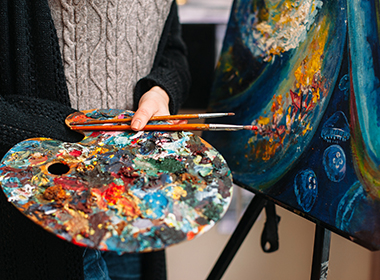
Oil painting
Oil painting is a painting technique well known to artists of the 19th and 20th centuries. However, this technique dates back to the end of the Middle Ages, gradually replacing tempora, which then consisted of an emulsion of egg yolk and egg white as well as colored pigments.
Its consistency was quite close to oil paint although it was later preferred for reasons of practicality.
If oil paint is popular, it is because it is a noble, rich, brilliant and creamy paint, particularly pleasant to work with for the painter.
Acrylic, a paint that adapts
Acrylic paint and its design
Acrylic is a paint whose solvent is largely composed of water. It is made from a mixture of pigments and acrylic resin and dries by evaporation of the water it contains.
The American printers Leonard Bocour and Sam Golden invented a first version of acrylic paint and put it on sale in 1949. Subsequently, the chemist Henry Levinson created artistic acrylic paint in 1963, diluted in water. Painters such as Andy Warhol and David Hockney used it very quickly. In Mexico, it was also designed around 1950. Chemists, in collaboration with Mexican mural painters, developed it during the creation of frescoes on the facades of the University of Mexico.
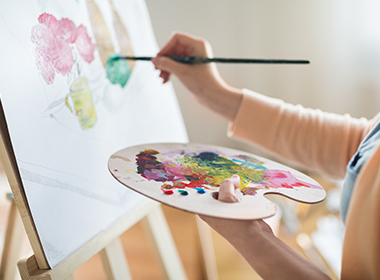
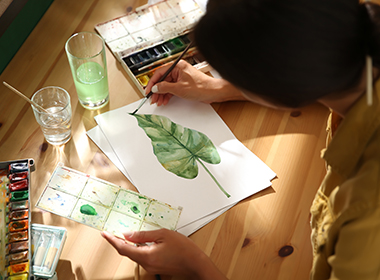
Watercolor painting
Watercolor is a transparent water-based paint, as opposed to gouache, which is opaque but of identical composition.
The same word is used to designate watercolor painting and works painted with this technique.
Many artists have explored watercolor painting in their studies, projects and outdoor work, due to the small equipment footprint and quick execution of this technique.
Pastel painting
History of pastel painting
The pastel technique has been used by artists since the Renaissance. Leonardo da Vinci used it and gave it its credentials. He appreciates in this process the fact of being able to give relief to the works.
However, it was later in the 18th century that painters specialized in this discipline. A big name from this era associated with this know-how is Quentin de la Tour. After them, many impressionists such as Mary Cassatt, Édouard Manet, Edgar Degas were also seduced by pastel. Then the Nabis with Édouard Vuillard.
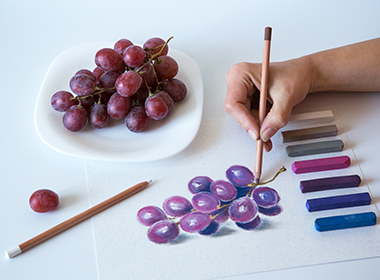
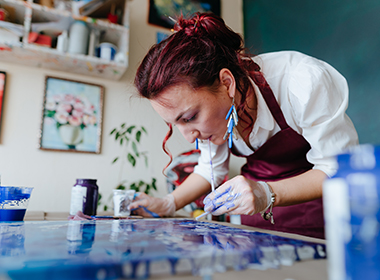
Mixed technique painting
What are mixed media?
In painting, the terms "mixed techniques" - also known as "mixed media" - designate a creative process which involves the use of at least two different art products, materials or binders of different nature.
One of the best-known classic methods is to first paint a work in tempera and then cover it entirely or partially with oil paint. Mixed media took off with the advent of acrylic.
In addition to being compatible with several art products, this painting can be integrated into different texture mediums, natural elements (paper, sand, shells, feathers, dried plants, etc.), collages, graffiti and transfer of picture. Which allows artists to express their creativity to the fullest.
Contemporary painting
From prehistoric times to today, painting remains an inexhaustible source of inspiration for artists around the world. In addition to representing a field of contemporary art, it constitutes a means of expression with multiple forms. Indeed, the brushstrokes illustrated on a painting hide a concept or a subject. Whatever the theme you are looking for, ARTactif presents a wide range of contemporary paintings.
Contemporary art, contemporary painting: what is it about?
According to chronology, contemporary art follows modern art which was initiated between 1850 and 1945 by the impressionist movement. Contemporary art is therefore any artistic movement born after the Second World War. Pop art, graffiti art, Fluxus, Street art and digital art are examples.
